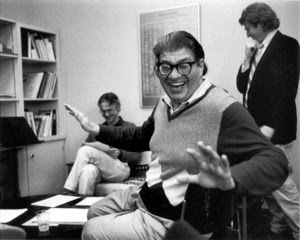I still remember the first time I heard the guitar parts of Angel, Mezzanine’s opening track, with that precise and rich sound. All the album has this intriguing parts that are perfectly on time, as if they were played by machines or computers. More than a reference to Neu! or Can and the krautrock world, Massive Attack accurate timing on this record is due to the will to create a music that can be felt as alienating and threatening as in the worst dystopian novel.
Cinematic as that album is, it required all musicians to border on perfection, something rare in rock music not because of a lack of technical skills from the people involved in it but because in this style of music it is required to be emotional and expressive, and perfection can be an enemy. Mind only during the passing of time how much low fidelity counted even more or so, so that not only the musicians should have been more sensitive, but also the recording process involved in it.
I’m relistening to Mezzanine right now, and pieces like Risingson, full of pedal effects that seem to slow down or even to brake the music creating a thrilling effect, the dialogue with the ethnic instruments and electronic parts on Inertia Creeps by a minimal guitar, the arpeggios on Man Next Door, the few notes spent during some parts of Group Four, are all testifying of a unique approach to music that made the members of the band declare today that is “impossible to quantify [Bruschini] contribution to the Massive Attack canon”.
Far from being a minor loss, that of Bruschini is instead the loss of a vision shared between musicians and the loss of a creative process. I still remember how much was praised but also criticized the approach to music by a band like black midi, of whom I talked earlier this year in a group post, for an album like Hellfire. This album, far from being relatable with Mezzanine as an overall project, has a similar approach to music in that the players seek for perfection of details up to the point of refusing to leave the listener, for almost an entire record, able to feel his own thoughts, overwhelmed as he is by the music itself.
Not by chance another dystopian tale through sound, and in this more direct than Mezzanine who is open to intepretation, both bands created a perfect device in order to take the listener and guide him through a mirror up to another dimension that tells many things about the present time when the album was conceived: Mezzanine has left people into a middle-ground, with all the implied sensations, while Hellfire leave the current audience almost dismembered. Time has passed, and society has changed for the worst since 1998 up to 2022.
Finally a part of history, Angelo Bruschini now can rest in peace and it’s up to us to come back to the times in which, through records or live performances – I remember one in Milano in 2010 at Circolo Magnolia where the visuals remembering also the brutal murder of Stefano Cucchi in my country by policemen were compensating a too much patinated sound – since he and the music he created were such an important part of our lives.












